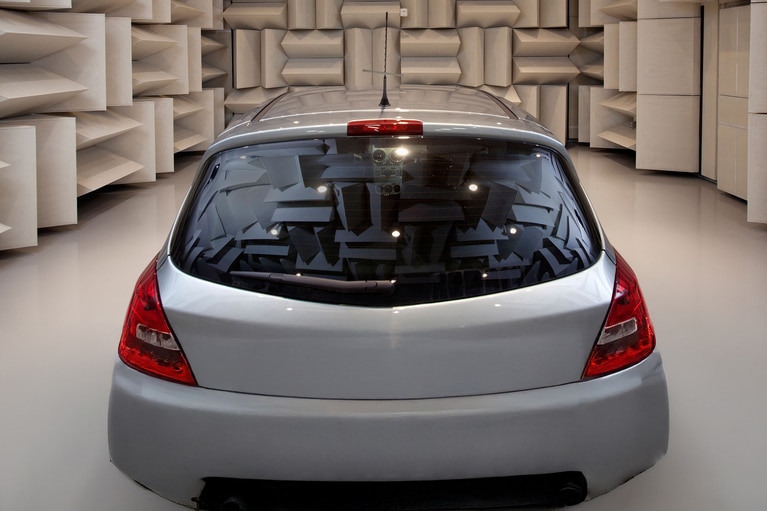
High-density power modules simplify and downsize EV power system design
Vicor power modules infuse innovation into EV applications. Learn how three new automotive-grade products will revolutionize the future of power designs
When electronic equipment is connected to the AC mains, it has the potential to generate common-mode electrical noise. If this is allowed to flow back on to the mains supply line, it can disturb other equipment also connected to the same line.
Manufacturers design capacitor-based power line filtering into their systems to decouple any such common-mode noise produced by the equipment’s power supply, preventing it from reaching other equipment through the mains power line. The reliability of these capacitors is critical to the safety of the equipment’s users.
Line filter capacitors are classified either as X-capacitors or Y-capacitors. X-capacitors are connected between line and neutral, to protect against differential mode interference. Their failure does not create conditions for dangerous electric shock, although it can create a fire risk. However, Y-capacitors are designed to filter out common-mode noise, and are connected between line and chassis; if they short-circuit, they create a risk of shock to the user.
Y-capacitors are designed to enhanced electrical and mechanical reliability standards. Capacitance values are also limited to reduce the current passing through the capacitor when AC voltage is applied, and reduce the energy stored to a safe limit when DC voltage is applied. Capacitors must be tested to applicable standards to qualify them for use as Y-capacitors.
The EN 132400 Standard was issued on 26 June, 1995 replacing all the European National Standards in force up to that date. This was identical to the International Standard IEC 60384-14 2nd Edition 1993. Since then, to make CENELEC and IEC standards identical in name as well as specification, the European Standard EN 132400 has been superseded by EN 60384-14 that is identical to the International Standard IEC 60384-14. Any European national body can issue approvals, with validity recognized by the bodies of all the other CENELEC member countries with no need to repeat the tests.
USA: UL 1414 for across the line applications and UL 1283 for Electromagnetic Interference filters Canada: CAN/CSA C22.2N°1 and CAN/CSA 384-14 China: GB/T14472
EN 60384-14 defines sub-classifications for both types. X1 capacitors are used for high pulse applications, while X2 and X3 types are used for general-purpose applications with different peak pulse operating voltages and peak value surge voltages. Y-capacitors, which are used to bridge operational insulation, are classified as Y1, Y2, Y3 or Y4 according to type of bridged insulation as well as AC and peak voltage ratings. Y1 class capacitors are rated up to 500VAC, with a peak test voltage of 8kV. Y2 capacitors have 150 to 300VAC ratings and a peak test voltage of 5kV. Y3 capacitors are rated to 250VAC with no peak test voltage specified. Y4 capacitors are rated to 150VAC with a peak test voltage of 2.5kV.
These include impulse voltage, endurance and active flammability tests. Application and parameters for these tests depend on the capacitor classification and sub-classification.
Two common types are metallised paper/film and ceramic. For Y-capacitors, ceramic types are less expensive than metallised film, but unstable over time and temperature and less mechanically stable. Ceramic failure mode also tends toward short circuit, whereas metallised paper and film types tend towards open circuit.
Vicor products including FARM, ARM and AC Front End have filters that include Y-capacitors. Refer to the FARM Design Guide and Application Manual for an example of an integral input filter comprising a common-mode choke, Y-capacitors and X-capacitors.
High-density power modules simplify and downsize EV power system design
Vicor power modules infuse innovation into EV applications. Learn how three new automotive-grade products will revolutionize the future of power designs
Active suspension comes of age bolstered by high-density power modules
Active suspension has evolved from 1990s beta model to today’s 48V-driven system. See the impact power modules have made on power system design
MHz switching frequency-based devices enable miniaturization of the DC-DC converter and EMI filters
Imagine using DC-DC converters solutions to harness the benefits of high-frequency switching without incurring conventional shortcomings
Future-proof advanced EVs by adopting 48V zonal architectures
As OEMs move to 48V, they consider how to optimize their power system design. Vicor power-dense modules deliver peak efficiency for 48V Zonal Architectures


